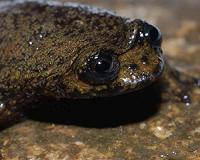| . |  |
. |
Vancouver BC (SPX) Apr 27, 2010 UBC researchers have proffered a new mathematical model that seeks to unravel a key evolutionary riddle - namely what factors underlie the generation of biological diversity both within and between species. Evolutionary biologists have long recognized that the emergence of rare traits within a population can spur diversity. For example, being one of a few under-sized predators in a population dominated by larger-sized predators can offer advantages - access to an abundance of small prey - and increase the likelihood of that trait prospering in the population. "But existing mathematical models that incorporate these 'rare type' advantages tend to have some serious shortcomings," says Michael Doebeli, a researcher at UBC's Biodiversity Research Centre and professor with the departments of Mathematics and Zoology. "They rely on single traits - like body size - and predict that the advantage offered by that trait has to be very significant in order to maintain large amounts of diversity." So Doebeli and research associate Iaroslav Ispolatov applied a new model to the riddle, which they outline in Science. Building on classical competition models for single traits, they designed their mathematical theory to gauge the evolutionary impact of multiple traits in concert, and found that adding this layer of complexity significantly lowered the threshold for the maintenance of diversity and the evolution of new species. "When you model one trait at a time - in isolation - you often find that ecological interactions aren't strong enough to drive divergence. But with many traits acting in concert, even very weak interactions can generate diversity. Our approach mirrors the complexity of reality more closely - if you think about it, all living organisms have at least dozens, if not hundreds, of ecologically relevant traits," says Doebeli. Mathematically, the biological phenomenon is reflected in fundamental properties of eigenvalues of quadratic forms. The theory would help explain the extraordinary amount of diversity found in many ecosystems, for example in the microbial world of oceans. In fact, the initial proving ground for the model might well be microbial populations. "It would be interesting to to test whether at the genetic level, pathways controlling different traits are regulated in concert to enable the inheritability of diversifying traits along multiple phenotypic axes."
Share This Article With Planet Earth
Related Links University of British Columbia More about Michael Doebeli Darwin Today At TerraDaily.com
 'Love-dart' slug, lungless frog among new species on Borneo
'Love-dart' slug, lungless frog among new species on BorneoKuala Lumpur (AFP) April 22, 2010 Wildlife researchers said Thursday they have discovered around 120 new species on Borneo island, including a lungless frog, the world's longest insect and a slug that fires "love darts" at its mate. Conservation group WWF listed the new finds in a report on a remote area of dense, tropical rainforest that borders Malaysia, Indonesia and Brunei on Borneo. The three governments in 2007 des ... read more |
|
| The content herein, unless otherwise known to be public domain, are Copyright 1995-2010 - SpaceDaily. AFP and UPI Wire Stories are copyright Agence France-Presse and United Press International. ESA Portal Reports are copyright European Space Agency. All NASA sourced material is public domain. Additional copyrights may apply in whole or part to other bona fide parties. Advertising does not imply endorsement,agreement or approval of any opinions, statements or information provided by SpaceDaily on any Web page published or hosted by SpaceDaily. Privacy Statement |